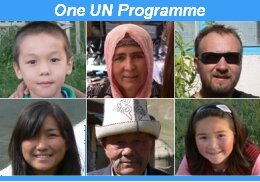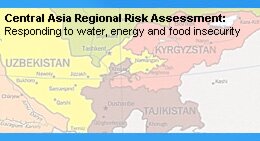Goal 1: Eradicate Extreme Hunger and Poverty
Target 1A: Halve, between 1990 and 2015, the proportion of people whose income is less than one dollar a day
• Proportion of population below $1 (PPP) per day
• Poverty gap ratio
• Share of poorest quintile in national consumption
Target 1.B: Achieve full and productive employment and decent work for all, including women and young people
• Growth rate of GDP per person employed
• Employment-to-population ratio
• Proportion of employed people living below $1 (PPP) per day
• Proportion of own-account and contributing family workers in total employment
Target 1.C: Halve, between 1990 and 2015, the proportion of people who suffer from hunger
• Prevalence of underweight children under-five years of age
• Proportion of population below minimum level of dietary energy consumption
Goal 2: Achieve Universal Primary Education
Target 2.A: Ensure that, by 2015, children everywhere, boys and girls alike, will be able to complete a full course of primary schooling
• Net enrolment ratio in primary education
• Proportion of pupils starting grade 1 who reach last grade of primary
• Literacy rate of 15-24 year-olds, women and men
Goal 3: Promote Gender Equality and Empower Women
Target 3.A: Eliminate gender disparity in primary and secondary education, preferably by 2005, and in all levels of education no later than 2015
• Ratios of girls to boys in primary, secondary and tertiary education
• Share of women in wage employment in the non-agricultural sector
• Proportion of seats held by women in national parliament
Goal 4: Reduce Child Mortality
Target 4.A: Reduce by two-thirds, between 1990 and 2015, the under-five mortality rate
• Under-five mortality rate
• Infant mortality rate
• Proportion of 1 year-old children immunised against measles
Goal 5: Improve Maternal Health
Target 5.A: Reduce by three quarters, between 1990 and 2015, the maternal mortality ratio
• Maternal mortality ratio
• Proportion of births attended by skilled health personnel
Target 5.B: Achieve, by 2015, universal access to reproductive health
• Contraceptive prevalence rate
• Adolescent birth rate
• Antenatal care coverage (at least one visit and at least four visits)
• Unmet need for family planning
Goal 6: Combat HIV/AIDS, Malaria and other diseases
Target 6.A: Have halted by 2015 and begun to reverse the spread of HIV/AIDS
• HIV prevalence among population aged 15-24 years
• Condom use at last high-risk sex
• Proportion of population aged 15-24 years with comprehensive correct knowledge of HIV/AIDS
• Ratio of school attendance of orphans to school attendance of non-orphans aged 10-14 years
Target 6.B: Achieve, by 2010, universal access to treatment for HIV/AIDS for all those who need it
• Proportion of population with advanced HIV infection with access to antiretroviral drugs
Target 6.C: Have halted by 2015 and begun to reverse the incidence of malaria and other major diseases
• Incidence and death rates associated with malaria
• Proportion of children under 5 sleeping under insecticide-treated bednets
• Proportion of children under 5 with fever who are treated with appropriate anti-malarial drugs
• Incidence, prevalence and death rates associated with tuberculosis
• Proportion of tuberculosis cases detected and cured under directly observed treatment short course
Goal 7: Ensure Environmental Sustainability
Target 7.A Integrate the principles of sustainable development into country policies and programmes and reverse the loss of environmental resources
• Proportion of land area covered by forest
• CO2 emissions, total, per capita and per $1 GDP (PPP)
• Consumption of ozone-depleting substances
• Proportion of fish stocks within safe biological limits
• Proportion of total water resources used
Target 7.B: Reduce biodiversity loss, achieving, by 2010, a significant reduction in the rate of loss
• Proportion of terrestrial and marine areas protected
• Proportion of species threatened with extinction
Target 7.C: Halve, by 2015, the proportion of people without sustainable access to safe drinking water and basic sanitation
• Proportion of population using an improved drinking water source
• Proportion of population using an improved sanitation facility
Target 7.D: By 2020, to have achieved a significant improvement in the lives of at least 100 million slum dwellers
• Proportion of urban population living in slums
Goal 8: Develop a Global Partnership for Development
Target 8.A: Develop further an open, rule-based, predictable, non-discriminatory trading and financial system
Includes a commitment to good governance, development and poverty reduction – both nationally and internationally
Target 8.B: Address the special needs of the least developed countries
Includes: tariff and quota free access for the least developed countries' exports; enhanced programme of debt relief for heavily indebted poor countries (HIPC) and cancellation of official bilateral debt; and more generous ODA for countries committed to poverty reduction
Target 8.C: Address the special needs of landlocked developing countries and small island developing States (through the Programme of Action for the Sustainable Development of Small Island Developing States and the outcome of the twenty-second special session of the General Assembly)
Target 8.D: Deal comprehensively with the debt problems of developing countries through national and international measures in order to make debt sustainable in the long term
Official development assistance (ODA)
• Net ODA, total and to the least developed countries, as percentage of OECD/DAC donors’ gross national income
• Proportion of total bilateral, sector-allocable ODA of OECD/DAC donors to basic social services (basic education, primary health care, nutrition, safe water and sanitation)
• Proportion of bilateral official development assistance of OECD/DAC donors that is untied
• ODA received in landlocked developing countries as a proportion of their gross national incomes
• ODA received in small island developing States as a proportion of their gross national incomes
Market access
• Proportion of total developed country imports (by value and excluding arms) from developing countries and least developed countries, admitted free of duty
• Average tariffs imposed by developed countries on agricultural products and textiles and clothing from developing countries
• Agricultural support estimate for OECD countries as a percentage of their gross domestic product
• Proportion of ODA provided to help build trade capacity
Debt sustainability
• Total number of countries that have reached their HIPC decision points and number that have reached their HIPC completion points (cumulative)
• Debt relief committed under HIPC and MDRI Initiatives
• Debt service as a percentage of exports of goods and services
Target 8.E: In cooperation with pharmaceutical companies, provide access to affordable essential drugs in developing countries
• Proportion of population with access to affordable essential drugs on a sustainable basis
Target 8.F: In cooperation with the private sector, make available the benefits of new technologies, especially information and communications
• Telephone lines per 100 population
• Cellular subscribers per 100 population
• Internet users per 100 population
|























